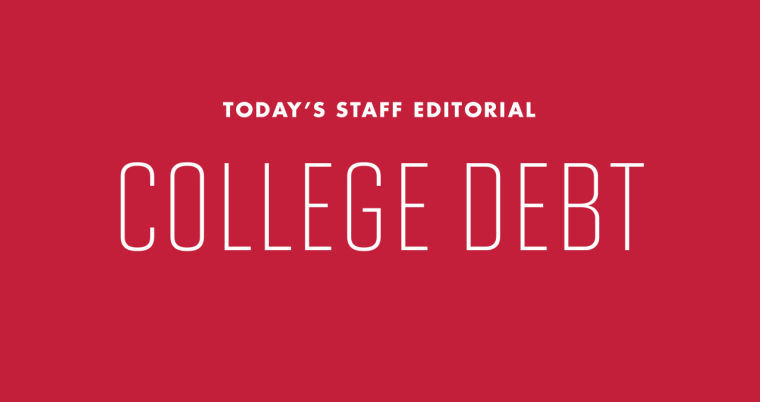
College debt
Prospective students from this state and every other have heard the adage time and again: College is expensive.
Whether it’s on the editorial or news pages of this newspaper, in conversation or from our president and lawmakers, the sentiment is the same, but the substance is thin. And many aspiring students around the country could be heading straight for crippling debt because “expensive” is the insufficient, vague warning they get.
But a mandate that could come from this state’s legislature — as well as an initiative that is gaining momentum on the national level — could make the college shopping experience more concrete and understandable.
A bill heading for this state’s House of Delegates and Senate would require all public universities to list information included on the federal “Financial Aid Shopping Sheet,” a tremendously simple but abhorrently under-circulated single sheet of paper with all the pertinent information about the costs of a specific college and the financial aid opportunities it offers.
Among the most important of these metrics is the estimated debt figures of students who graduate from the college in question. Unexpected debt is a problem our generation will continue to struggle with long after we get our diplomas. Working to get rid of that surprise can only help us as we become full-time workers and independent consumers.
On the whole, any effort to make the college application process more uniform is a positive. In almost no other occasion does a consumer have to search so hard to get a straightforward answer on costs than when he or she is looking at colleges.
Having standardized, side-by-side comparisons would help change that.
Thankfully, the University System of Maryland and its 12 institutions have been voluntarily abiding by such a smart regulation already. It is yet another example of this state’s higher education being ahead of the curve in terms of accessibility and quality. And we’re grateful for those efforts.
The bill in the state legislature primarily would affect community colleges.
But while many at this university have the fortune to take community college courses or entire terms without worrying about their relatively smaller costs, it’s important that students are treated with the same transparency in those institutions in the university system.
In 2007, community colleges enrolled 40 percent of the students in higher education, according to College Board. As a gateway to higher professional prospects for low-income citizens, in financial situations equally or more precarious than those at this university, the state’s mandate is far from a formality for that 40 percent.
Since taking office, President Obama has harped on the importance of community colleges in training an employable and well-rounded nation, calling community colleges the “unsung heroes” of higher education. And it’s true.
Passing a mandate on such information in this state is a step in the right direction. We can only hope that this initiative gains momentum.
In a political climate in which “regulation” has gained a nasty connotation, this is an excellent example of regulation done right.
All prospective students — especially those in fragile financial situations — have the right to freedom from the uncertainty that abounds in an opaque and confusing college application process. The solution is simple: Make that process clearer.



